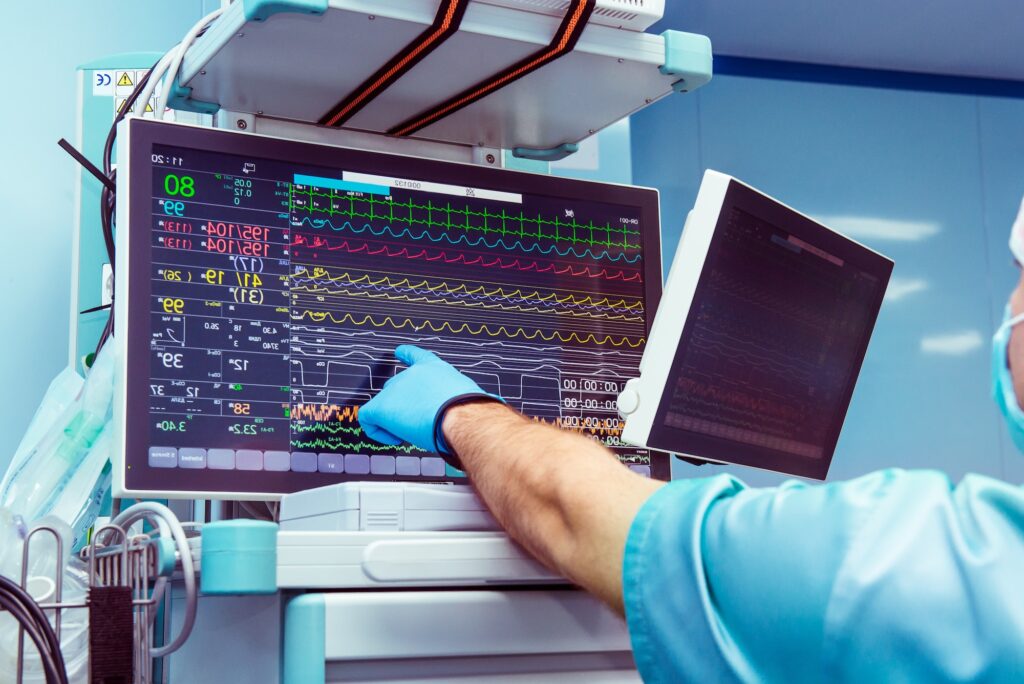Yalova Cardiology
Everything you need to know about your heart health. Your health is entrusted to us with high technology in Yalova.
pacemaker
Pacemaker (Pacemaker/ICD/CRT implantation)
A pacemaker is a small device implanted under the skin to regulate the heartbeat. It sends electrical signals to the heart to help it beat regularly. Pacemakers are often used to treat conditions such as bradycardia (slow heartbeat) or heart block (blocked or delayed electrical signals that regulate the heartbeat). In this article, we will explain pacemaker implantation, how it is done, the types of pacemakers available and what patients can expect during and after the procedure.
What is Pacemaker Implantation?
Pacemaker implantation is a medical procedure that involves placing a small device under the skin to help regulate the heartbeat. The device is connected to one or more cables (wires) that are inserted into the heart through a vein. The pacemaker sends electrical signals to the heart to help it beat regularly.
Why is Pacemaker Implantation Necessary?
Pacemaker implantation is needed when the heart’s electrical system is not working properly. This can cause the heart to beat too slowly or irregularly. Here are the conditions that may require pacemaker implantation:
Bradycardia: Slow heartbeat (less than 60 beats per minute)
Heart block Inhibition or delay of electrical signals that regulate the heartbeat
Sick sinus syndrome: When the heart’s natural pacemaker is not working properly
Long QT syndrome: A heart rhythm disorder that can cause fainting or sudden death
Heart failure: When the heart does not pump enough blood around the body
How is Pacemaker Implantation Performed?
Pacemaker implantation is usually performed in a hospital or clinic under local anesthesia. The procedure usually takes about an hour and patients can go home the same day.
During the procedure, the doctor makes a small incision under the collarbone and creates a small pocket under the skin to hold the pacemaker. The doctor then inserts one or more cables (wires) into the heart through a vein in the neck or upper chest. The wires are then connected to the pacemaker and tested to make sure they are working properly. When the pacemaker is working correctly, the incision is closed with sutures or surgical glue.
Pacemaker Types
There are several types of pacemaker, each with its own characteristics and benefits. The three main types of pacemaker are:
Single-chamber pacemaker: This type of pacemaker has a single lead (wire) that is placed in the right atrium or ventricle of the heart. It is used to treat conditions such as bradycardia or heart block.
Dual-chamber pacemaker: This type of pacemaker has two leads (wires) placed in the right atrium and ventricle of the heart. It is used to treat conditions such as sick sinus syndrome or atrioventricular block.
Cardiac Resynchronization Therapy (CRT) Pacemaker: This type of pacemaker has three leads (wires) placed in the right atrium and ventricle of the heart, as well as the left ventricle. It is used to treat heart failure and can improve the heart’s ability to pump blood.
Risks and Complications of Pacemaker Implantation
Like all medical procedures, pacemaker implantation comes with risks and potential complications. Here are some of the most common risks and complications associated with this procedure:
Bleeding or hematoma at the incision site
Infection
Allergic reaction to anesthesia
Collapsed lung
Damage to blood vessels or heart
Dislodged or broken bullet
Pacemaker malfunction or malfunction
Nerve or muscle damage
Patients should discuss these with their doctor to determine whether the benefits of pacemaker implantation outweigh the risks.
What to Expect After Pacemaker Implantation?
After the procedure, patients will need to stay in the hospital for several hours to be monitored for any complications. During this time, patients will need to lie still and immobilize the arm or shoulder where the pacemaker was implanted to prevent bleeding or hematoma at the incision site. Patients may also be given medication to help prevent blood clots.
Patients will need to take it easy and avoid strenuous activities for a few days after being discharged from hospital. Patients may feel some discomfort or pain at the incision site, but this will subside within a few days. Patients will also need to follow their doctor’s instructions regarding medication, diet and activity levels to promote healing and prevent complications.
Living with a Pacemaker
After pacemaker implantation, patients will need to make some adjustments to their daily routine to make sure the pacemaker is working properly and to prevent complications. Here are some things that patients should keep in mind:
Avoiding electromagnetic fields: Some electronic devices such as cell phones and microwaves can affect the pacemaker. Patients should avoid placing electronic devices directly on the pacemaker or holding them on the side of the body where the pacemaker is located.
Regular checks: Patients will need to have regular check-ups with their doctor to make sure the pacemaker is working properly and make adjustments as needed.
Exercise: Exercise is important for maintaining overall health, but patients should avoid contact sports and activities that involve rapid changes of direction or jarring movements that can damage the pacemaker.
Dental procedures: Patients should inform their dentists that they have a pacemaker and avoid certain dental procedures that can affect the pacemaker, such as the use of electrocautery or dental drills.
When to Call a Doctor
Patients should call their doctor if they experience any of the following symptoms after pacemaker implantation
Chest pain or discomfort
Shortness of breath
Swelling or redness at the incision site
Fever or chills
Dizziness or fainting
Conclusion
Pacemaker implantation is a medical procedure used to regulate the heartbeat in patients with certain heart conditions. While there are risks and potential complications associated with this procedure, the benefits often outweigh the risks. Patients should discuss their options with their doctor to determine if pacemaker implantation is right for them. By understanding the procedure, the risks and what to expect during and after the procedure, patients can make informed decisions about their care and achieve the best possible outcomes.


